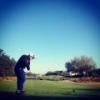Leupold GX-3 - REVIEW
-
Who's Online 49 Members, 0 Anonymous, 957 Guests (See full list)
- Ironmanpan
- Iamsecond116
- Rob Person
- Mrsbell89
- Purple-Eagle
- FallenSaber
- Berg Ryman
- Deacon Blues
- Bubba1985
- DancingGengar
- Michael.Sandoval33
- Gary Brown
- jayyarr
- unccross
- ChaosReigns
- Lefty11
- hoppman
- MIGregB
- cjeffs12
- MDGolfHacker
- Jim Myers
- cmanning91
- dbdors
- Rdad777
- KC Golf
- Golf88
- Kenct
- dazedandconfused
- pbclub
- knightsofnii
- David Leighton Reid
- ruvduv
- BallsLeon
- HikingMike
- Preeway
- goaliedad30
- Wib081
- ditch3
- Chaysen
- Erin B
- mustanggolf
- Jakejakobsen12
- Automatik
- Roger Tucky
- cbleavitt85
- hankthegolfboy
- Easton
- Beaker37
- stevegp67


Recommended Posts
Archived
This topic is now archived and is closed to further replies.